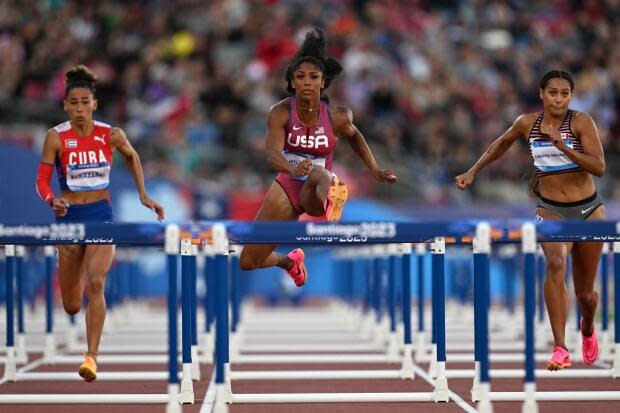Uniform or costume? Athletes sound off on revealing U.S. women's Olympic track kit
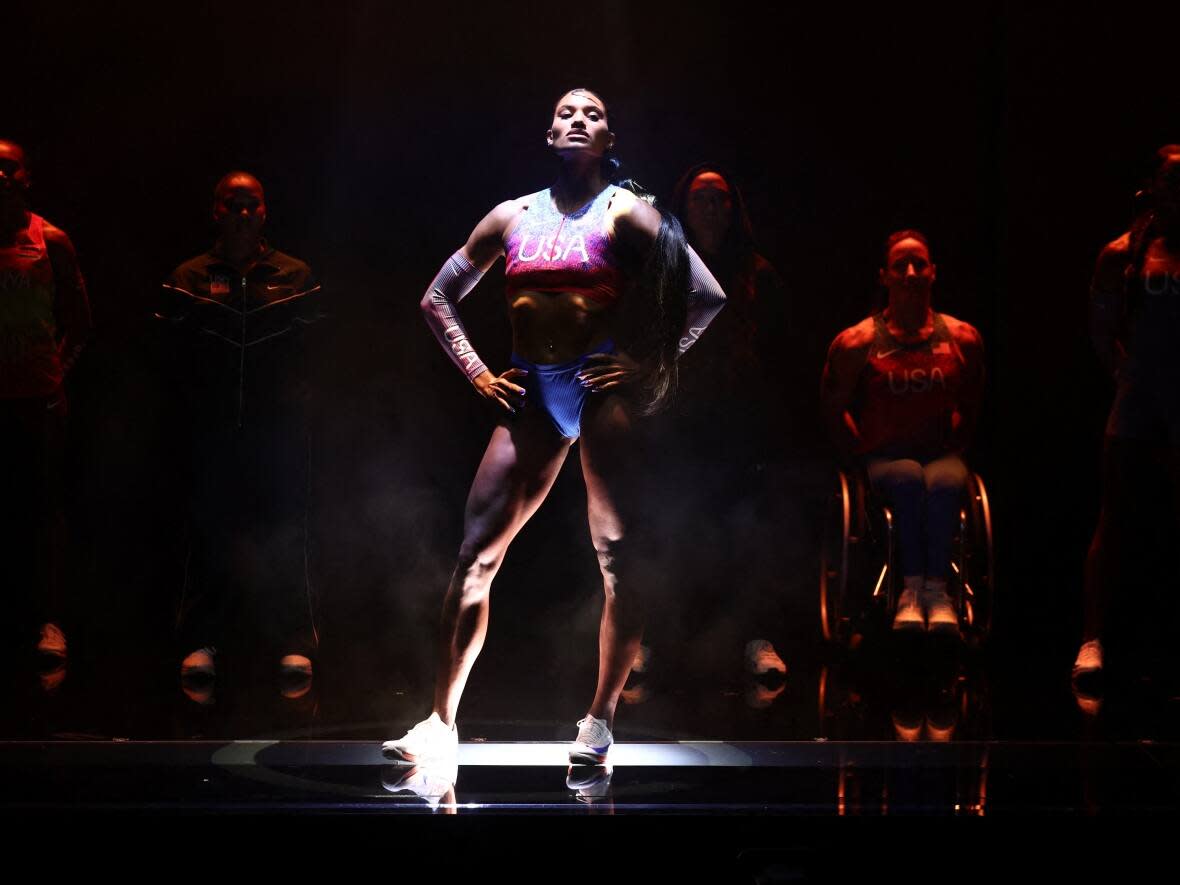
"Everything is showing." "A costume born of patriarchal forces." "Concerning."
These are just some of the reactions from athletes as Nike unveiled its new Team USA track and field kit for women late last week. And even though the U.S. sportswear brand later clarified that the high-cut bodysuit currently raising eyebrows is just one of the options for athletes competing in this summer's Olympic Games, the controversy has reignited longstanding criticisms of sexism in sporting uniforms.
It's an ongoing problem in women's sport, Angela Schneider, an Olympic silver medallist in rowing and the director of the International Centre for Olympic Studies at Western University in London, Ont., told CBC News.
"It's not about athletic-wear that is designed to get the maximum and best performance for her specific sport. Instead, it's designed to draw on the onlooker," Schneider said.
"What a distraction," she said of Nike's bodysuit. "It's ridiculous."
On Thursday, images were made public of Nike's U.S. women's kit on a mannequin, showing a very high-cut bikini line and prompting backlash from several athletes that the uniforms are sexist.
"Women's kits should be in service to performance, mentally and physically. If this outfit was truly beneficial to physical performance, men would wear it," U.S. national champion distance runner Lauren Fleshman wrote in an Instagram post Thursday.
"This is a costume born of patriarchal forces that are no longer welcome or needed to get eyes on women's sports."
Lululemon unveiled its Olympic and Paralympic gear for Team Canada Tuesday. Those uniforms will be worn during both the opening and closing ceremonies, at media appearances and in the athlete's village.
When competing, Olympic athletes wear clothing made by the brand sponsoring their sport's national federation.
Athletics Canada — the national sports governing body for track and field, para athletics, cross-country, and road, mountain and trail running — is sponsored by Nike and will also be outfitted by the company, Mathieu Gentès, Athletics Canada CEO, confirmed with CBC News in an email statement.
He noted that athletes are provided with a variety of clothing options each year and there are over 14 styles to choose from in the new line.
"Athletes ultimately have options and choices in what uniform they choose to wear from the overall line, which is one of the great benefits of working with Nike as our official clothing supplier," Gentès said.
WATCH | Team Canada unveils Lululemon Olympic apparel:
A history of sexualizing female athletes
Debate has raged for years over more revealing outfits for women Olympians in disciplines from beach volleyball to gymnastics.
One infamous example is when former FIFA president Sepp Blatter suggested women soccer players wear "tighter shorts" in 2004.
In 2011, the International Boxing Association asked female boxers to wear skirts instead of shorts. The same thing happened with the World Badminton Federation that year.
And in 2021, the Norwegian women's beach handball team was fined for wearing shorts instead of bikini bottoms during the European Beach Handball Championships (singer Pink offered to pay the fines, and the sporting body later changed the rule after a player protest).
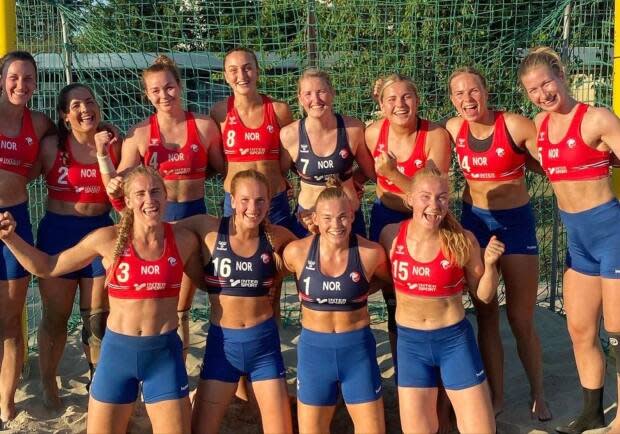
These gendered outfits are often largely due to antiquated notions that women's sports needs to offer viewers something else in addition to the sport itself, said Michele Donnelly, an assistant professor in sport management at Brock University.
"It's a disproven idea that sex sells, that viewers would want to see women's bodies on display," she said.
What has been proven is that women's sports sell as a sports product when given the opportunity, Donnelly said.
For instance, this year the NCAA women's March Madness tournament broke viewership records. The Professional Women's Hockey League's first game drew in 2.9 million viewers. And more than four million viewers watched the women's soccer team defeat Sweden for Olympic gold in 2021.
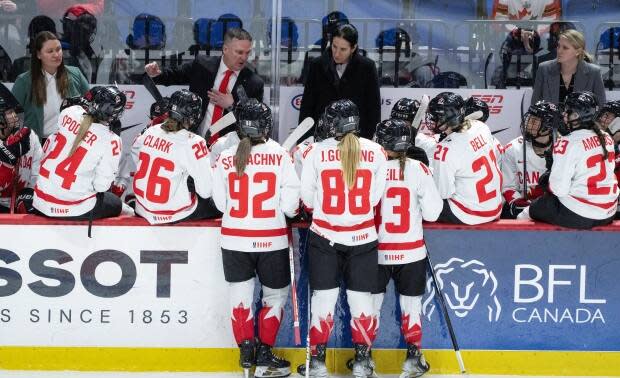
Pushback from athletes
With that success comes more athlete pushback, Schneider explained.
For instance, Germany's women's gymnastics team wore full-length bodysuits at the Tokyo Olympics, in what they said was a stand against sexualization in the sport. Gymnastics New Zealand last week updated its attire rules to allow women and girls to wear shorts or leggings over their leotards.
"Women athletes are becoming more empowered because they're actually starting to get respected more for their sport," Schneider said.
"It's allowing them to be able to stand up and give more pushback. Because before they didn't have any choice. They didn't have any funding. They haven't had that opportunity."
The new U.S. track uniforms have been widely criticized by female athletes.
"They are absolutely not made for performance," U.S. steeplechaser Colleen Quigley said in a message to Reuters.
"Wait my hoo haa is gonna be out," U.S. long jump Olympian Tara Davis-Woodhall commented on a post by Citius Mag.
There should be a serious rethinking of these uniforms given the backlash, Schneider said. But she points to the fan and player fury over the new MLB uniforms being see-through as an example of how the public is more used to women athletes being sexual objects.
"They went crazy about it. And they couldn't see any hoo haas."
Athletes have choice
In the news release of its official unveiling last Thursday, Nike only showed an example of what Canada's male track and field uniforms could look like by explaining that the kit modelled by Kenyan long-distance runner Eliud Kipchoge will be worn by six of Nike's track & field federations — United States, China, Germany, Uganda, Canada and Kenya.
Citius Mag and a CBS sports reporter both posted photos of what they say are Nike's Team Canada track and field athletic kits, but again, only showed a male uniform, which had shorts.
CBC News has reached out to Nike for more information.
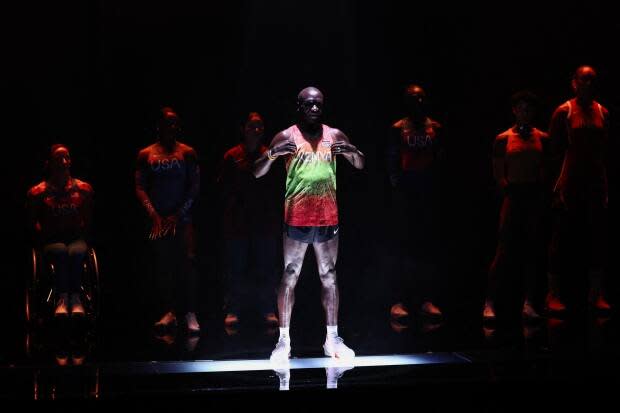
In a statement last week, John Hoke, Nike's chief innovation officer, said the company worked with athletes throughout the design process. He also noted that the athletes can pick and choose from various designs and outfits. In other words, no one has to wear the high-waisted leotard — unless they choose to.
In an email to NPR, Nike reiterated that the new line offers a variety of styles to choose from, including shorts.
"We showcased some of the new Olympic uniforms at the Nike On Air experience in Paris — but, as we are a few months from the Games and working with limited samples in a limited format presentation, not all looks and styles were featured," the company wrote.
U.S. pole vaulter Katie Moon wrote on Instagram that what was shown on the mannequin was "concerning," but also added that the criticism ultimately attacks the athletes who might decide to wear it.
"The point is we DO have the choice of what to wear, and whether we feel the best in a potato sack or a bathing suit during competitions, we should support the autonomy," she wrote.
